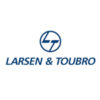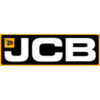The Evaluable Pellet Dies available from A-one are manufactured in a wide range of diameters for both infrared and XRF applications. The standard dies, made from 440C stainless steel, offer an ideal solution for preparing sample discs/pellets prior to analysis. However, care
must be taken where extremely hard, corrosive or irregular shaped samples are to be compressed, as stainless steel dies and pellets can be damaged.
All of the dies are evaluable, enabling dry, uncontaminated and clear pellets to be prepared.
Die Care and Use with KBr Powder
The dies are made from corrosion resistant steel, but because of the corrosive nature of wet KBr or possibly from other substances used with the dies, it is necessary to take certain precautions.
A) When not in use always ensure that the die and its component parts are thoroughly clean and dry. If possible, it is preferable to store the die and components in a drying cabinet or a desiccator.
B) When cleaning the die pellets, be careful of the polished faces. Do not use a cloth that has a hard abrasive texture. Always use a soft cloth or tissue. If KBr powder has been used as a sample for compression, any remaining powder should be washed away from the die body, plunger and pellets with distilled water and then rinsed with methanol. After drying the parts with a soft cloth they can be placed on a warming plate to keep warm and dry until use
with the next sample.
C) Never exceed the maximum safe load when pressing.
Note: (Optional)KBr powder P/N 4548TR is supplied in a sealed glass bottle. The seal should not be broken until using the powder for the first time. Store the KBr powder in an oven at 50ºC or a desiccator to prevent absorption of moisture
Preparing the Evaluable Pellet Die for Use
The die and its component parts are packed at the factory in such away that they do not suffer damage during transit. The optically polished pellets
(1) are encapsulated in an easily removed protective material and the die may be lightly coated with a protective oil. Before use, the protective material on the pellets should be removed and all of the component parts must be thoroughly cleaned with an organic solvent (methanol is suitable) to ensure that the protective oil is fully
removed. The parts should then be wiped clean taking care to use non-abrasive cleaning cloths on the polished faces of the pellets
(1).Place the base
(2) of the die onto a work surface. (For dies up to13mm in diameter the base will include a black colored surrounding
evacuation ring and port
(5)). For dies of 20mm diameter and above,
the base does not have the surrounding evacuation ring and port. (The vacuum port is part of the die body).
Ensure that the O-ring seal (3) is correctly positioned into its groove in the evacuation ring or around the
smaller diameter piece of the base for dies of 20mm diameter and above.
Assembly for Evacuable Pellet Dies
Filling the Evacuable Pellet Die with Sample
This procedure is typically for the filling of a 13mm die, but can be adapted for your specific sample and size die. Using a paper chute, funnel or
spatula, pour a well ground and mixed powder (2 to 4mg sample in 175 to 225mg KBr mixture) to be compacted into the bore of the cylinder
body (4). Tap the side of the die lightly so that the powder is evenly distributed across the face of the polished pellet (1 Optional in order
provided single base). You can also use a spatula to smooth over and level the surface of the powder if tapping of the die is insufficient. Take
the second stainless steel pellet (1) and push this (polished face first - downwards) into the bore of the cylinder body (4). Take care not to force
or jam the pellet (1) into the bore. If it is placed centrally, it should sink down in the bore onto the surface of the powder. Insert the plunger
(6), non- chamfered edge end first into the cylinder body (4). Ensure that the O-ring seal (7) is in place around the plunger and seated in the
chamfer of the cylinder body (4) as shown in Figures 1 and 2. The die is now ready to be placed in the press for compaction of the sample
powder.
Pressing of the Sample Pellet Place
the die assembly into a hydraulic press. Make sure that the die is central on the bottom pressing face of the press. If a vacuum supply is to be
used on the die whilst pressing, connect the vacuum line tubing to the evacuation port (5) of the die. Switch on the vacuum line and maintain
the vacuum before, during and after the pressing process. Ensure that all safety guards on the press are closed and then start to press the die.
Apply a load to the plunger (6) to produce the desired glassy quality of KBr/sample pellet. For the 13mm size die, a load of 7 tons indicated at
the pressure gauge of the press is usually sufficient. Advanced Solid Pack 39 Note: The following table gives typical loads to produce good
quality KBr pellets.


















